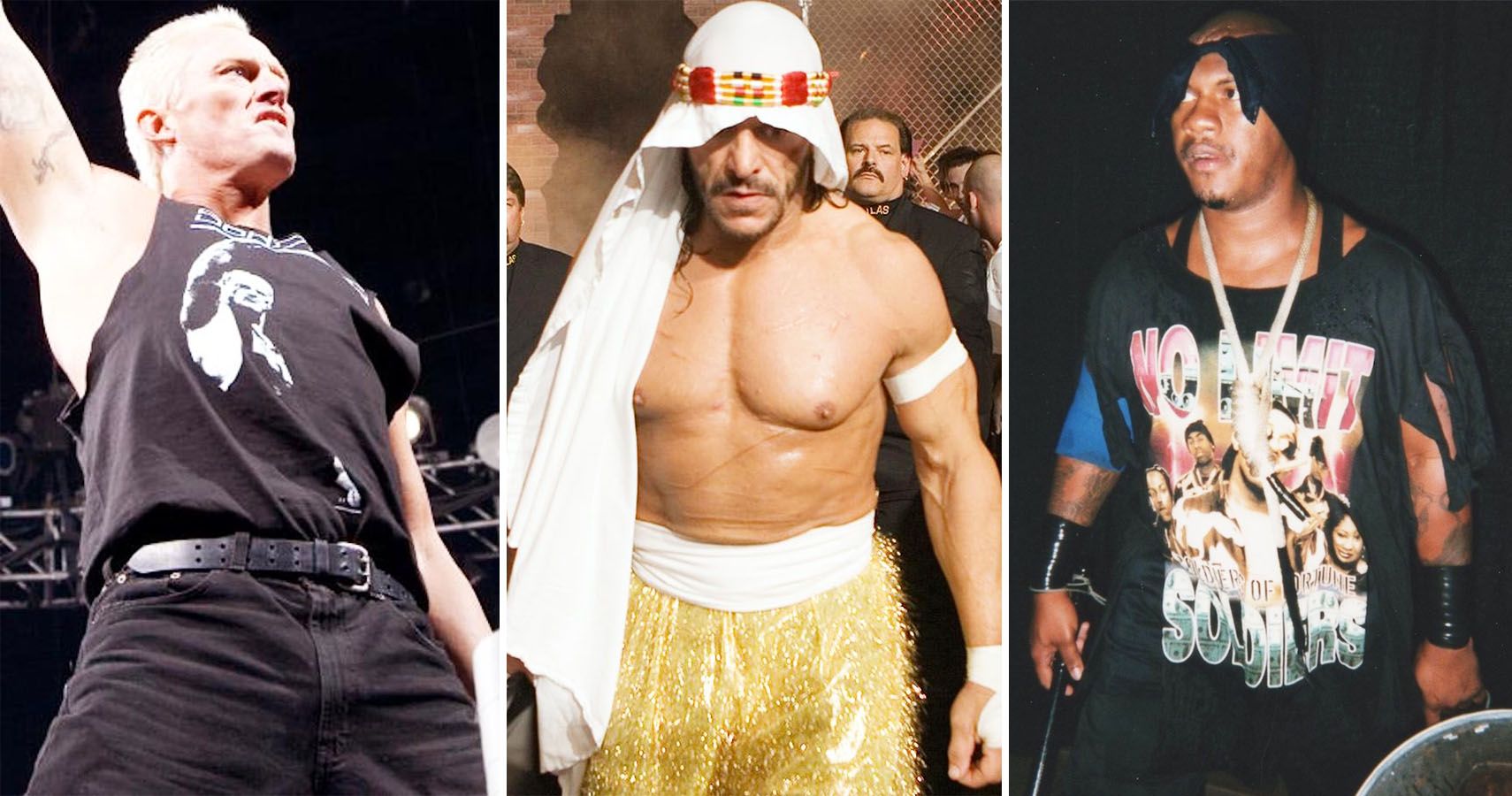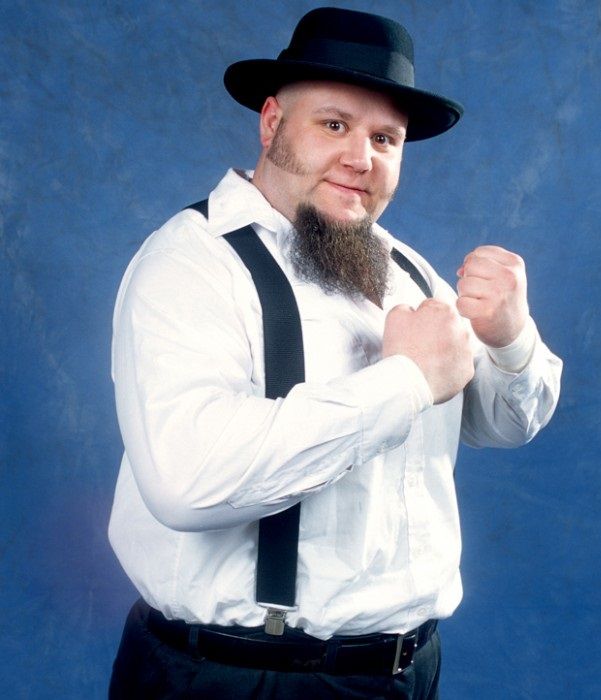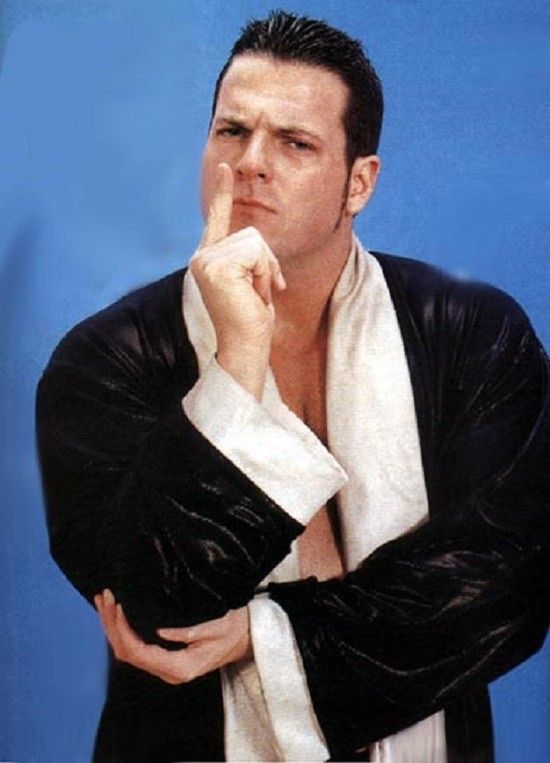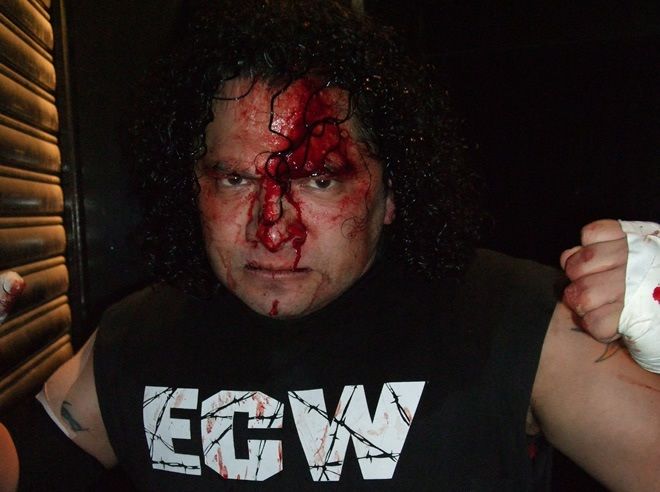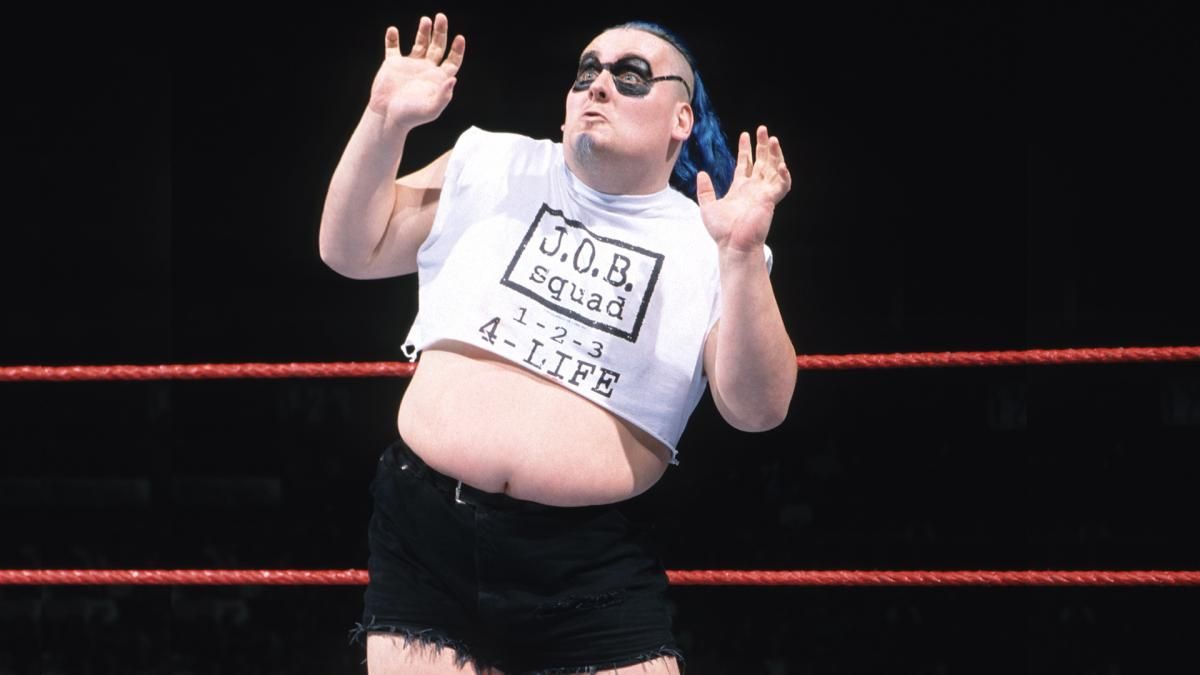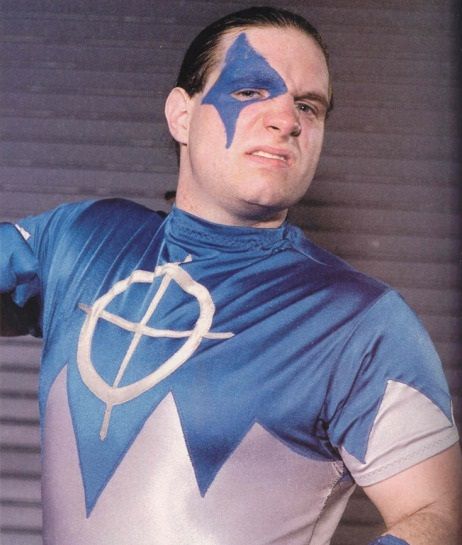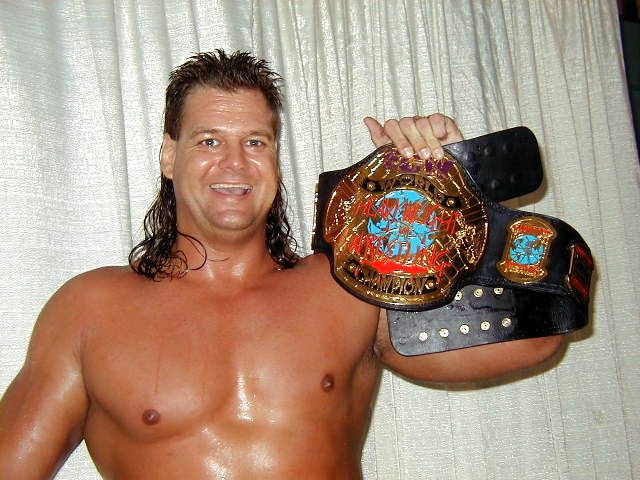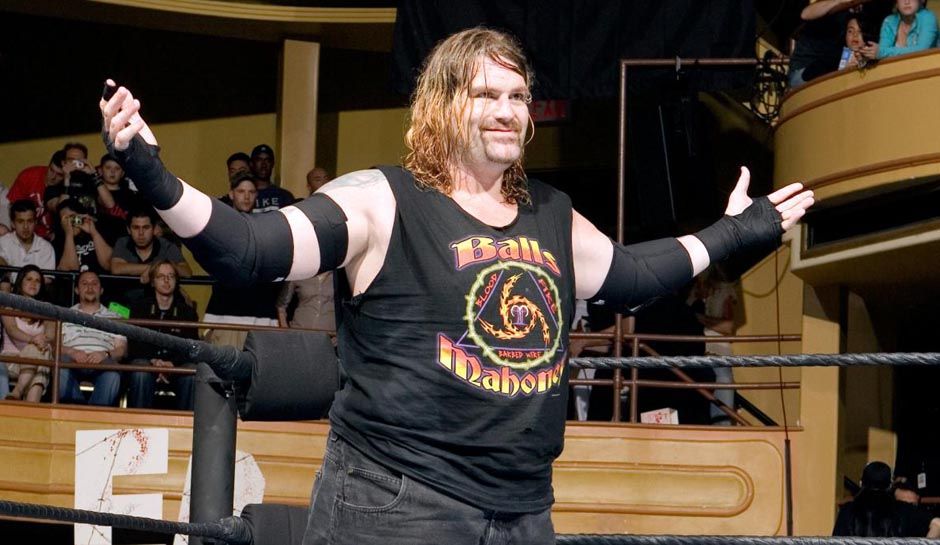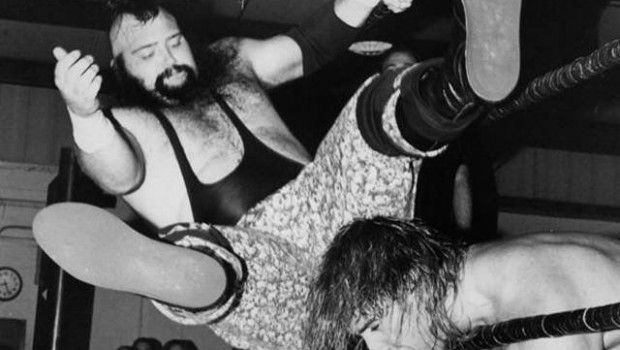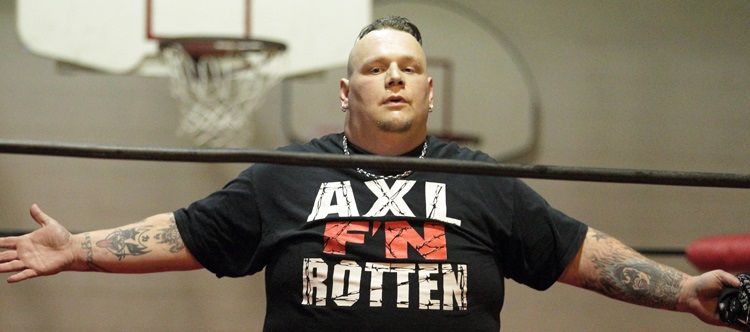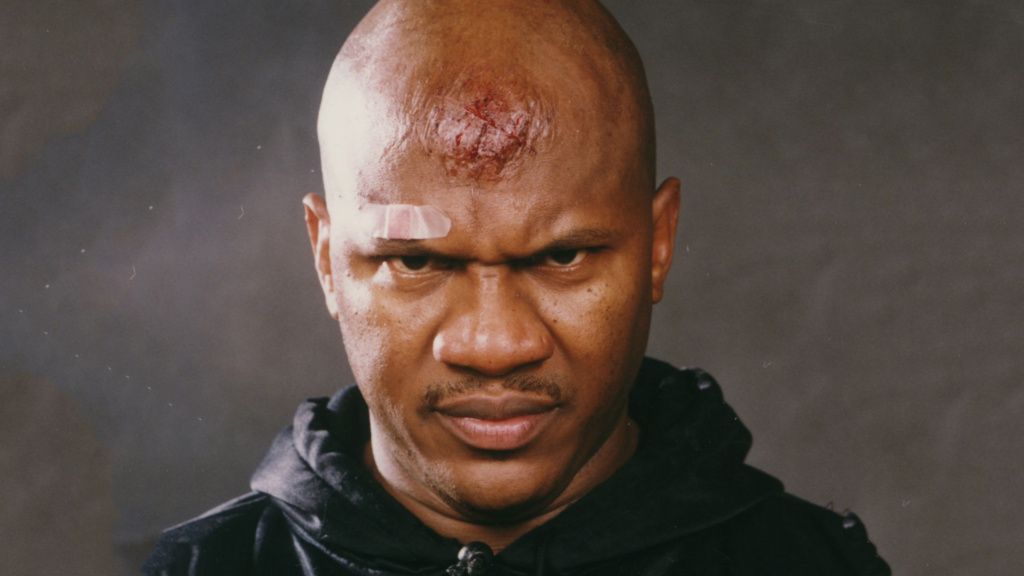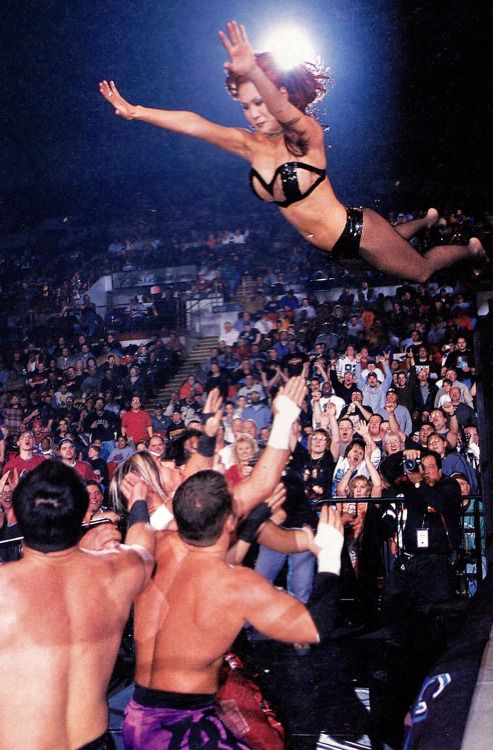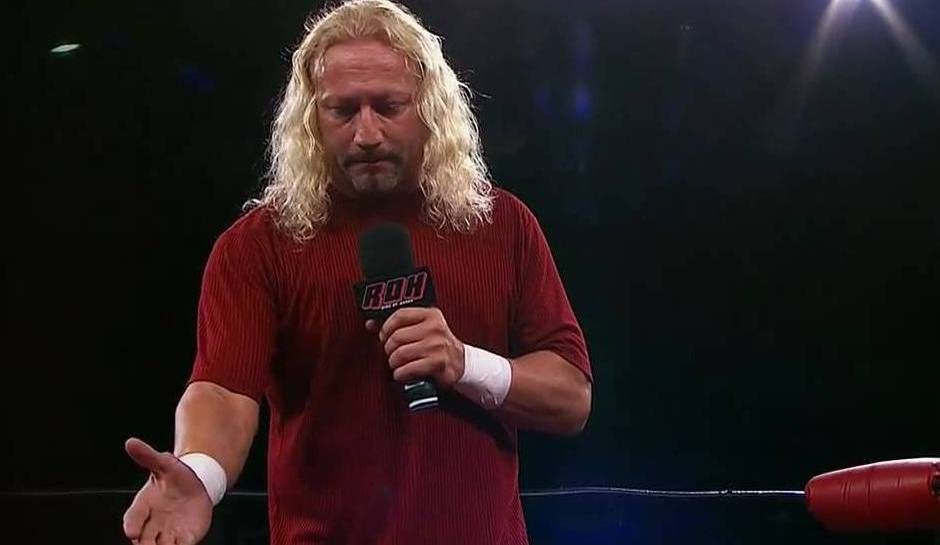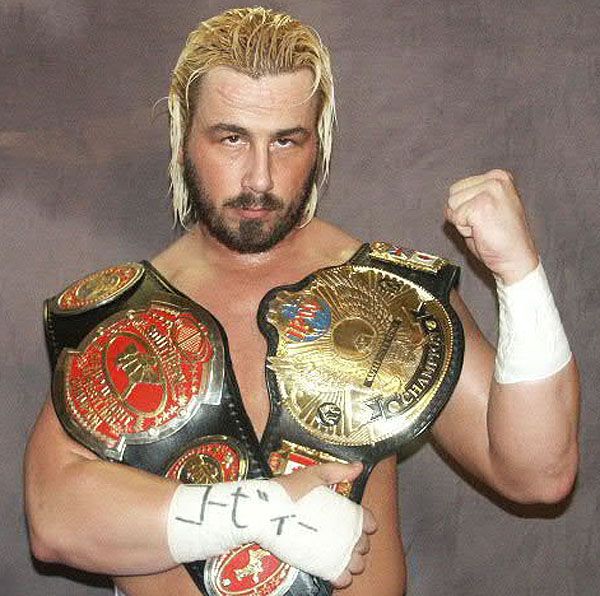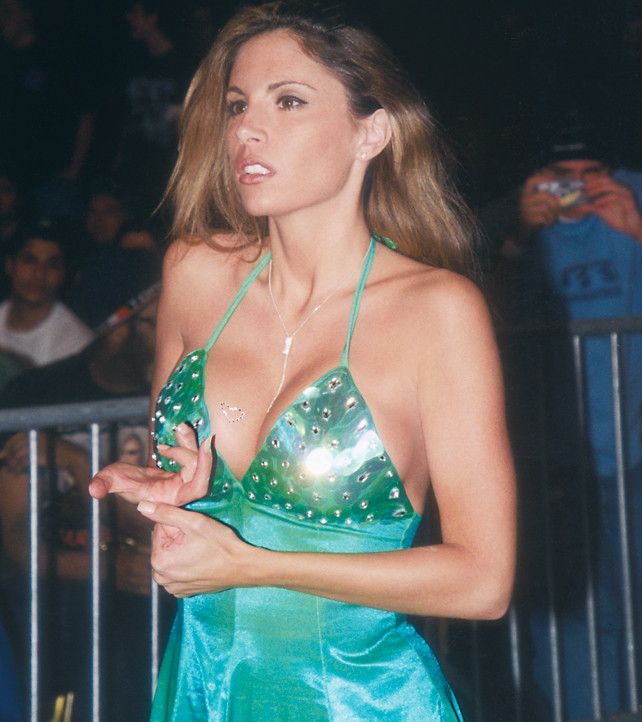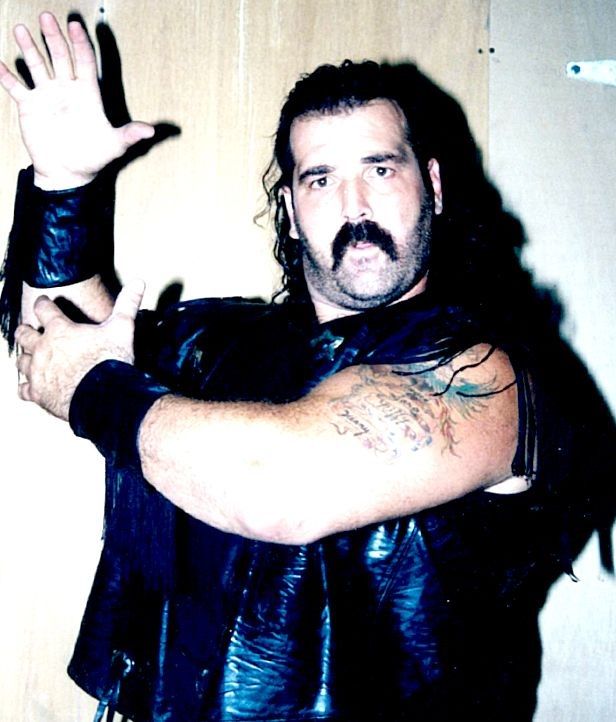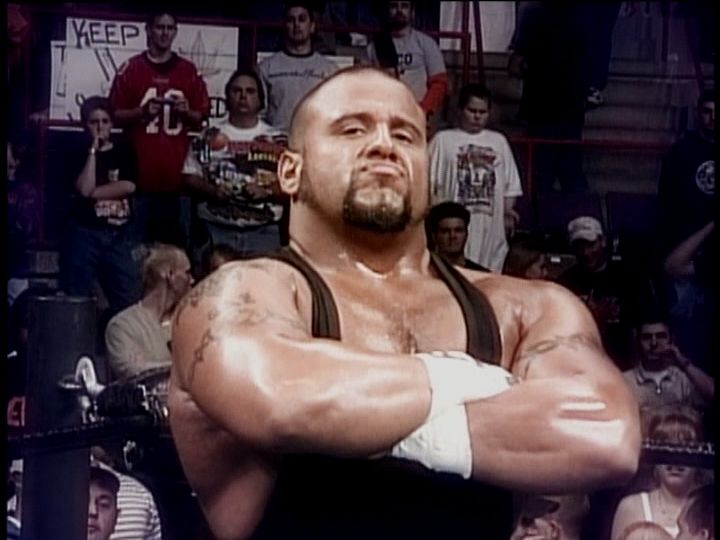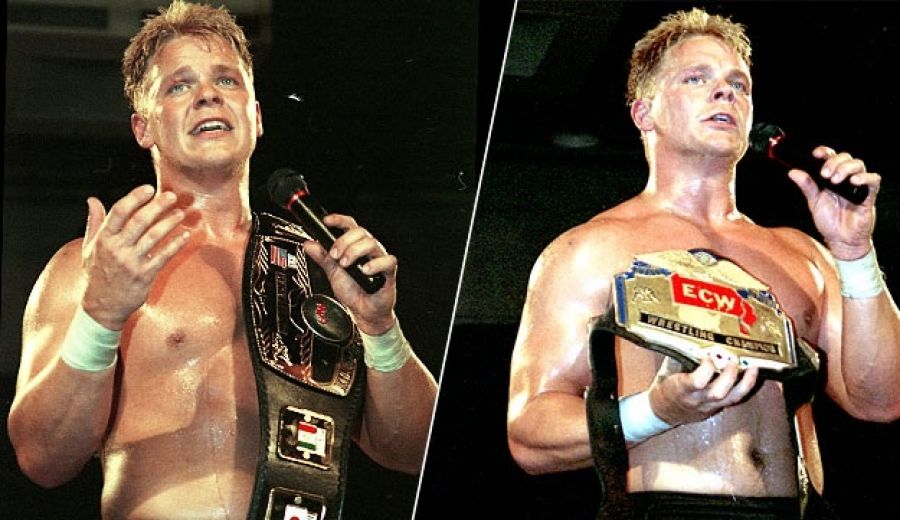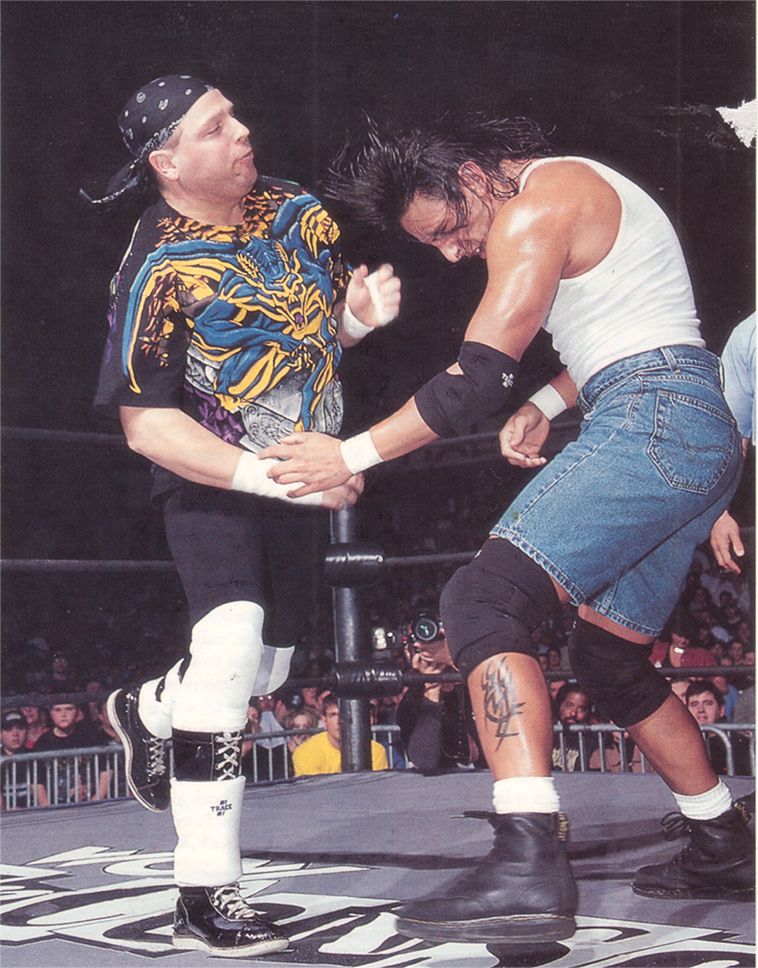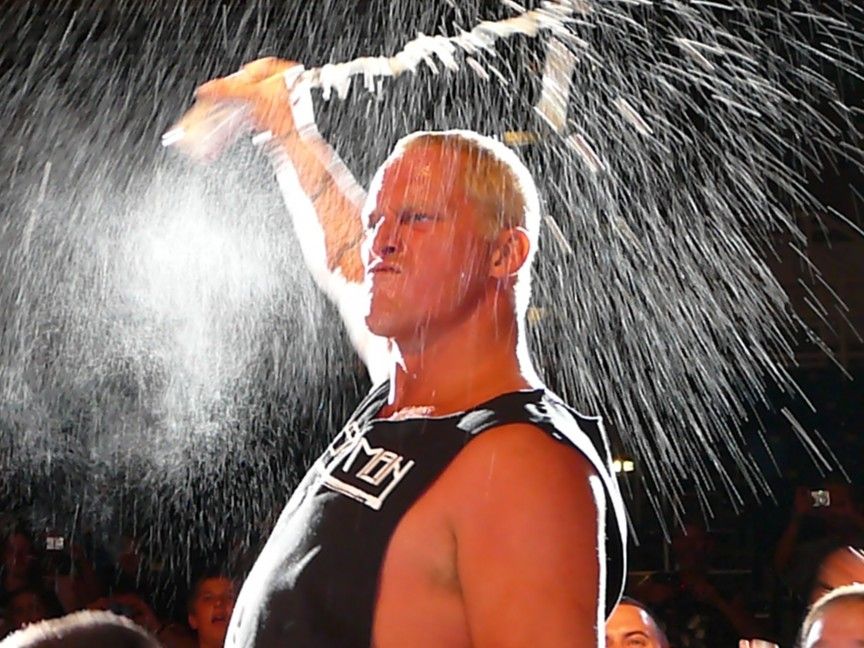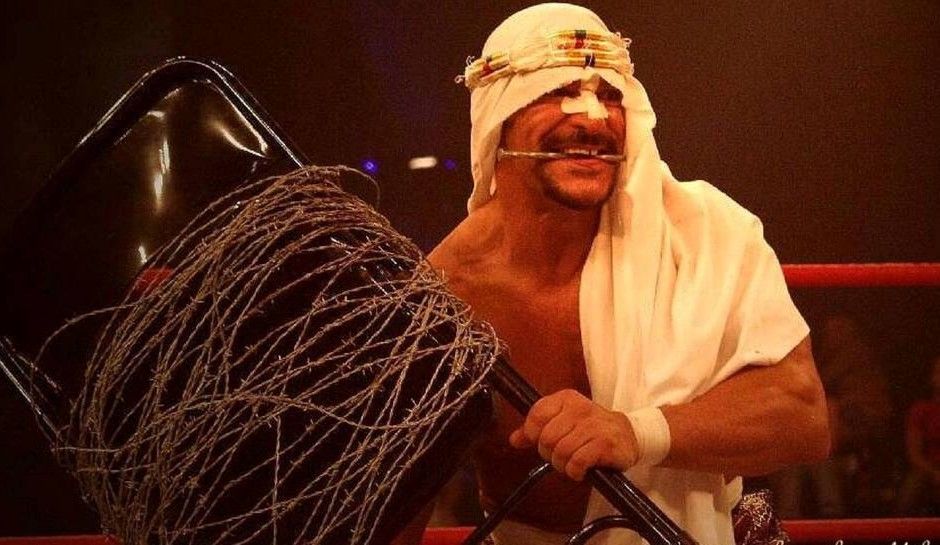While casual pro wrestling fans found themselves embroiled in what has now become known as the “Monday Night War” between the WWE and WCW in the 1990s, quietly a revolution was beginning. Long-time fans who missed the gritty, hard-hitting style of wrestling which had been replaced with the slick, scripted product being offered on television migrated to a Philadelphia bingo hall. A hall where a low budget independent show was packing the house with ultra-violent action and edgy storylines. At the direction of Paul Heyman, Extreme Championship Wrestling emerged as the country’s alternative wrestling promotion and, in the process, drew the attention of the industry.
Initially, the circuit was like any other independent of the day. It recruited a motley crew of wrestling misfits that didn’t fit the mold elsewhere and combined them with a slate of marquee names at the twilight of their careers. However, as the product evolved, so did the caliber of talent and matches. ECW added stars from Mexico, Canada and Japan who were outstanding but hadn’t yet secured major visibility in the United States. Suddenly ECW became the product to watch, and the industry took note and advantage; both WCW and WWE would raid the ECW roster for talent. While some like Mick Foley and Rob Van Dam would easily make the transition, that wasn’t the case for everyone who attempted to turn the page on their career in the WWE, WCW, or later TNA.
20 20. Roadkill
Michael DePoli was a product of the ECW’s own training camp, debuting in 1996 at age 20. Learning the ropes in his formative years with ECW, he generated some notoriety under the name Amish Roadkill, even holding the ECW Tag Team Titles on one occasion with Danny Doring. When ECW closed, Roadkill leveraged his ECW fame to stay active on the independent circuit and scored a few appearances for TNA in the process, though he was not picked up for an ongoing contract. He was signed to the WWE in 2005 at age 29 and sent to developmental in Kentucky. Over the next few years, the WWE would use DePoli as Roadkill.
He was signed to the WWE in 2005 at age 29 and sent to developmental in Kentucky. Over the next few years, the WWE would use DePoli as Roadkill, Braddock and Antoni Polaski however, nothing seemed to stick and eventually he was released at the start of 2008. Upon his termination from the WWE, the 323 pounder simply retired from the industry to pursue other career opportunities, having exhausted his wrestling dreams.
19 19. Simon Diamond
After a successful ascent on the independent circuit during the 1990s as Lance Diamond, Pat Kenney became Simon Diamond in ECW where he found a home for the final three years that the company was in operation. As a tag team with Johnny Swinger and later adding C.W. Anderson to their faction, the trio was just starting to find their stride in the company when operations came screeching to a halt.
Diamond had initially been in talks about a position with WCW, but those ended when WCW was sold to the WWE. Though romantically linked to ECW valet Dawn Marie, who would eventually get signed by the WWE, Diamond was never able to make the conversion himself. While he has remained active on the independents and has held a recurring role with TNA, he hasn’t been able to reproduce the success that he charted prior to and during his ECW run.
18 18. Super Crazy
ECW became one of the first major circuits in the United States to integrate the lucha libre influence of wrestling into its program. As the first organization to host Rey Mysterio, Psicosis, Eddie Guerrero and other top Mexican stars, Paul Heyman can be credited for many of these stars attracting the attention. Most of these foreign sensations would be scouted by one of the big two organizations for further opportunities to accelerate their careers. It would have seemed a natural fit that Super Crazy was next in line to replicate that success.
Wowing audiences in Mexico, Puerto Rico and ECW, fans witnessed a character that fully lived up to his name with the risks he took with his own body. In 2005, Super Crazy secured a contract with the WWE, partnering with Psicosis and Juventud Guerrera. The initial faction disintegrated with both Juventud and Psicosis being released, while Super Crazy would remain employed with the WWE for three years before getting lost in the shuffle and released.
17 17. Blue Meanie
The Blue Meanie was doomed from the start. In ECW, he received a lot of screen time as a comedic character playing a sidekick for Stevie Richards, which eventually evolved into a gimmick all on its own. Richards and Meanie were joined by Nova and a one-time spoof of WCW’s New World Order morphed into an ongoing role as the “Blue World Order”. The trio lampooned the three principals of the nWo in the more visible faction; Hulk Hogan, Scott Hall and Kevin Nash.
Upon being signed by the WWE in 1998, the Blue Meanie was typecast as a comedy relief character. Billed as “Bluedust”, a takeoff of the WWE’s Goldust, Meanie would eventually work a few mid-card programs in the company. However, the ECW appeal of Meanie didn’t translate to the WWE audience, and after being sent home to get in better shape, he eventually found himself back in ECW, 100 pounds lighter and attempting a more serious character – that didn’t take.
16 16. Nova
ECW’s Nova looked like he could be a mid-card character wrestler on the roster who could break the mold and successfully transition to the WWE. After five years in ECW, he was signed to a developmental contract with the WWE and was sent to Ohio Valley Wrestling in Louisville, Kentucky in 2002. In his OVW debut, he defeated The Prototype (aka John Cena) to win the OVW Heavyweight Title. While in developmental, he would also hold tag team gold with Aaron Stevens (later Damien Sandow).
However when Nova made the jump from developmental to the main roster, he was assigned the character “Simon Dean” a fitness guru trying to schill supplement products and exercise videos to the audience. While Nova was able to transition from a ring career to a role in the talent relations department, the height of his on-camera career was arguably under the banner of Paul Heyman.
15 15. Mike Awesome
Fans that are aware of Mike Awesome’s dominance in Japan during the 1990s as tag team partners with Rick Titan may still be at a loss to understand why Awesome didn’t become a major star in the United States. He had the right start, training under WWE alumnus Steve Keirn; he had the size – standing 6’6” and tipping the scales at 292 pounds. He had the look of a superstar, and on top of that, he was the nephew of Hulk Hogan. Viewers witnessed his physical bouts with Masato Tanaka in ECW and still the two-time ECW Heavyweight Champion stumbled in his ascent in the industry.
Though highly touted and signed to WCW while still carrying the ECW Title, he languished in the mid card matches for a year until WCW’s closure. He did have a year in the WWE, but later stated that he hated it, citing the political environment made it less enjoyable than previous career stops.
14 14. Balls Mahoney
Starting his career at age 15, the 6’2”, 250 pound Balls Mahoney cut his teeth wrestling in Puerto Rico, Smoky Mountain Wrestling and had even appeared in select matches as enhancement talent for the WWE before he found a home in ECW. Over the course of that four year span, Mahoney would hold the ECW World Tag Team Titles on three occasions and established himself as one of the franchise players of the company. However, when the doors closed in 2001, the recruiters weren’t exactly beating down a trail to his door.
After a five year return to the independents, he was recruited by the WWE to be part of their re-boot of the ECW brand. While spending three years under Vince McMahon’s umbrella, there was never any opportunity to break away from the ECW brand for one of the other WWE vehicles – RAW or SmackDown. Mahoney died of an apparent heart attack at age 44.
13 13. Hack Meyers
In some ways, Hack Meyers was the epitome of what Extreme Championship Wrestling was all about. Myers was only 20 years old when he first laced his boots for ECW in 1993, getting in on the ground floor prior to their rise to the mainstream. He was a pear-shaped 225 pounder with a bad haircut that became an endeared fixture on the roster. Dubbed by fans as the “Shah of ECW”, the nickname came about inadvertently as fans latched onto the sounds that the wrestler uttered while getting his offense in the match. He was a regular for ECW for four years, and following his exit from the company remained active on the independent scene.
Though he was still an active wrestler, Meyers found time to train young up-and-comers including aspiring stars such as Travis Tomko and Scoot Andrews. While he did secure some paydays for the WWE as an extra, his career post-ECW leaves little of note. Like so many in the wrestling industry, Meyers perished at a young age, dying at 41 due to complications from brain surgery.
12 12. Axl Rotten
Baltimore, Maryland’s Brian Knighton started his career in the 1980s and had been wrestling for about seven years on the northeast independent scene before the opportunity arose to sign on with ECW. Partnered with his “brother” Ian Rotten, the duo were a fixture of the tag team division until they dropped a special stipulation match forcing them to part ways. Rotten is most commonly remembered for novelty matches involving barbed wire – barbed wire baseball bats, barbed wire chairs, and more.
Rotten leveraged the visibility and reputation he earned in ECW to secure opportunities for rival hardcore promotion XPW as well as multiple tours in Japan. However, after his ECW run, Rotten’s career was rooted in the independents, save for a handful of WWE appearances in 2005 around the time of the One Night Stand pay per view. Rotten died earlier this year of a reported accidental heroin overdose at age 44.
11 11. New Jack
His mottled forehead reminds us of a modern day Abdullah the Butcher and that is a role model that no doubt appeals to one of the most hardcore wrestlers of his generation. Originally from North Carolina, Jerome Young debuted at age 29, and after three years on the independent scene in the southern United States, landed in Extreme Championship Wrestling in 1995. Originally partnered with Mustafa Saed as The Gangstas, the duo would claim two ECW Tag Team Title reigns.
However, while subjecting his own body to significant risk during his career, New Jack generated controversy by being excessively reckless and violent with opponents as well. Such was the case in 1996 when New Jack took liberties with the 17-year-old Eric Kulas in a match resulting in the teen needing 50 stitches. Another incident in 2004 resulted in an aggravated assault with a weapon charge after he stabbed wrestler William Jason Lane nine times. Is it shocking that the corporate environment of the WWE didn’t want to pick this guy up?
10 10. Kimona Wanaleia
Though her actual tenure in ECW was brief, the former go-go dancer who had been invited to check out professional wrestling by friend Raven, had a memorable run in Philadelphia. Debuting as Raven’s valet, 20 years later, fans still remember the innuendo implied by her ring name. More memorable however were her vignettes, which featured the Korean-born valet dancing seductively in the rafters of the ECW arena. Three years after her ECW introduction to wrestling, she was hired by WCW and given the name Leia Meow.
Over a two-year run with WCW, she would serve as a valet for the Varsity Club and later the Jung Dragons. However, even with the wide visibility of WCW television, her stay there was nowhere near memorable. She had already been terminated as part of sweeping roster cuts before Vince McMahon concluded the deal that would see the WWE conquer its fiercest rival.
9 9. Jerry Lynn
That Jerry Lynn never became a household name in the realm of professional wrestling may be one of the greatest injustices of our generation. Trained by Brad Rheingans and Eddie Sharkey, Lynn first attracted attention on the independent scene in a rivalry with the Lightning Kid (Sean Waltman); Waltman was signed with the WWE in 1993. While Lynn did sign a deal with the rival WCW in 1995, his excitement quickly soured as he was assigned to the lucha libre division under a mask with the uninspiring name “Mr. J.L.”.
It was in ECW that fans got to see Lynn at his best – ascending through the ranks to win the ECW World Heavyweight Title. Though he would enjoy multiple appearances for the WWE, including a short run as WWE Light Heavyweight Title holder from 2001-02, he never got his big break. While his post-ECW career includes highlights from lengthy runs in TNA and Ring of Honor, mainstream fans may never know the greatness that was Jerry Lynn. Lynn retired in 2013.
8 8. Steve Corino
Over the past week, we have heard official word that Steve Corino has been hired by the WWE. However, it’s unlikely that we’ll ever see him on camera as the self-proclaimed “King of Old School” has been hired as a trainer for the company’s Performance Center. While we are excited to learn that the expertise of this well-travelled veteran will be shared with the next generation of talent, we can’t escape the feeling that we have been robbed. It seems now that fans will never see potential classics with Corino in action under the WWE banner.
A former ECW World Champion and NWA World Champion, Corino first rose to fame in ECW where his anti-hardcore sentiment made him a reviled villain. Though his career has spanned the globe, multiple tryouts with the WWE over the years never yielded a contract. Corino has gone on record to suggest that perhaps he was “too old school” for the company’s tastes.
7 7. Francine
As ECW’s “Queen of Extreme”, many fans may not realize that Francine Fournier had originally intended to wrestle when she responded to a television ad for a local school. After learning the ropes from J.T. Smith, she actually worked a few house show matches for ECW before she was cast as a devoted fan. The role saw Francine playing a lucky fan who had the chance to become a wrestling manager. Her appeal to the fans in the ECW Arena saw her ascend in her career – connected at different times to Stevie Richards, the Pitbulls and most famously to Shane Douglas. Following ECW’s closure, she had a brief stay in TNA in 2002 and a forgettable stop in the WWE in 2006.
Following ECW’s closure, she had a brief stay in TNA in 2002 and a forgettable stop in the WWE in 2006. While ECW fans clamored for Francine and snapped up her merchandise, she was unable to convert that into long-term career success. After three years of inactivity, Francine backed out of an ECW reunion event in 2009, but her career will be forever cemented to the company where she got her start.
6 6. 911
Professional wrestling loves its giants and that was certainly the case for Al Poling who was introduced to ECW fans as simply 9-1-1. The 6’8” native of New York City was originally cast as a handler for Sabu, but his popularity soon saw his role expand to become an enforcer for the company itself. It wasn’t uncommon to see 911 hit the ring and lay to waste a couple of undercard wrestlers whose match was insignificant to the outcome of the night as a whole. He abruptly left the company in 1996 after a falling out with Paul Heyman and signed with WCW. However, despite his size, WCW didn’t seem to know what to do with him. Whether they were billing him as Tombstone, Sledge Hammer or Big Al, nothing seemed to register with audiences and he was soon let go.
When he returned to ECW, he would receive his justice for abandoning ship as Heyman shattered the myth of his once much-hyped monster by having him beaten by the 145 pound Spike Dudley in less than a minute.
5 5. Taz
One might argue that Taz has successfully transitioned from ECW to enjoy a lengthy career in both the WWE and TNA. However, if you go back to review those tapes of Taz and his evolution within the ECW ranks, the face that you see on television now (while admittedly still gainfully employed in the wrestling industry) is a much different one. With six years of experience to his credit when ECW opened, Taz is a company original, signing on in 1993 and remaining with Paul Heyman for eight years. During that time, Taz held them all – the ECW Tag Team Titles (three times), the ECW Television Title (twice), the ECW World Title (twice) and the ECW FTW Heavyweight Title (twice).
Following his ECW tenure, the “Human Suplex Machine” did see interest from both WCW and the WWE and he signed with the latter. While he would spend close to ten years with the WWE, eight of those years were from ringside, not as an active competitor.
4 4. Shane Douglas
When you look at the career of Shane Douglas, it appears that any small change in the path along the road could have drastically affected his outcome, yielding a more positive result. However, Douglas does hold a distinction of being one of the most controversial characters among his peers in recent memory. Initially cast as a "milk and cookies" fan favorite in both WCW and the WWE in the early 1990s, Shane got his first opportunity to show his versatility when Paul Heyman dubbed him “The Franchise” of ECW. Straying away from the classic babyface, Heyman booked him as the top villain in the company.
His work as the face of the company helped to establish the brand in the early 90s and secured him a contract with the WWE in 1995. However, cast as “Dean” Douglas (a reference to his real life certification as a teacher) combined with backstage animosity between himself and Shawn Michaels limited his success. He returned to ECW in 1996. After three years, an opportunity arose in WCW, but the company was in such disarray, he didn’t have an opportunity to excel there either.
3 3. Mikey Whipwreck
The case of Mikey Whipwreck is an interesting one. At 20 years old, John Watson was simply a member of the promotion’s ring crew. His wrestling career was a complete fluke as he was invited to wrestle after Paul Heyman had discovered him messing around in the ring and demonstrating an aptitude for aerial maneuvers. Heyman created Mikey Whipwreck, an in-house underdog pitted against a cast of bloodthirsty opponents. It connected with the audience and Whipwreck laid claim to about every title in the company over a five year period.
He was recruited to WCW based on his ECW hype, but upon reporting for work on his first night, he was held up by security who didn’t recognize the 5’9”, 187 pounder. Even Kevin Nash, who is identified as having given the nod to hire the young man, didn’t recognize him by sight when they met backstage. His time in WCW is best summed up by that simple anecdote.
2 2. Sandman
Like many appearing on this list, while the career of James Fullington included stops in both WCW and the WWE, nothing will come close to topping the meteoric success that he experienced in ECW. The lawless environment of the original ECW and the Philadelphia bingo hall was catered towards Fullington's style of "wrestling". Often appearing while puffing on a cigarette and swilling beer on his way to the ring, Sandman was an anti-hero that generated a strong following with the loyal fanbase.
In WCW, unable to use his name as it was trademarked by ECW, he was simply billed as “Hardcore Hak” where he lasted less than a year before returning to Heyman’s fold. His career has included a short run in TNA and he was later featured on the roster of the WWE re-boot of ECW, but the chemistry of the crew and environment were a far cry from the roots that first saw him grow.
1 1. Sabu
In the 1990s, the wrestling media was heralding the insane antics of the “homicidal, genocidal, suicidal madman” named Sabu. Born the nephew of the original Sheik (Ed Farhat), Sabu had wrestled most of his formative years in Japan before returning to the United States, and specifically to ECW for his first big break in the American market. Save for a few months in 1995 when WCW tried to fit Sabu into their mix, he was an ECW exclusive from 1993 to 2000. Sabu was responsible for some of the most insane moments in the company’s run.
While in ECW, Sabu rarely spent time without a championship to his credit. In subsequent runs with TNA and later the WWE’s version of ECW, he would rarely ascend to main event status. Today, Sabu is facing some serious health concerns for the risks he took for the sake of wrestling over a 30-year career. Despite the sacrifices, he will have to resign himself to a cult-like hero as his legacy in the game.

